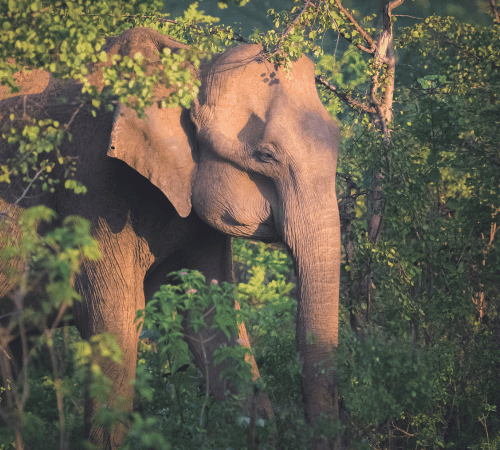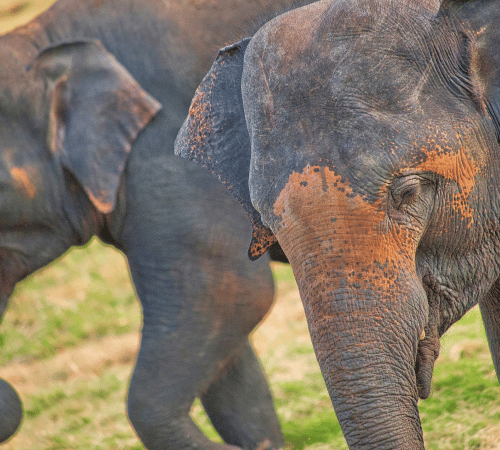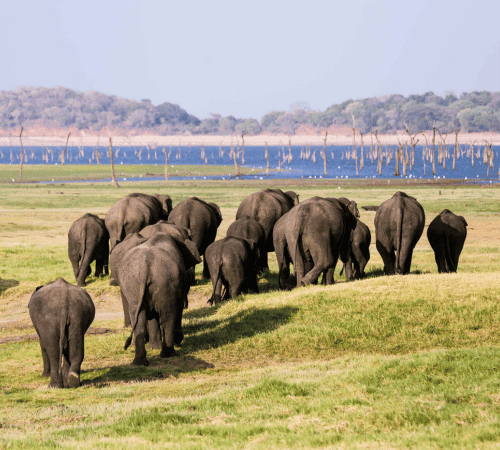Sri Lankan Elephants: History, Religion, Importance, and Current Challenges
Sri Lanka, a tropical paradise located in South Asia, is renowned for its rich biodiversity and diverse wildlife. Among its most iconic creatures is the Sri Lankan elephant (Elephas maximus maximus). Revered for centuries, these magnificent animals hold immense historical, religious, and cultural significance in Sri Lanka. However, the Sri Lankan elephant population faces various challenges in modern times. In this article, we will explore the history, religious significance, importance, and the current problems faced by Sri Lankan elephants.
Historical Significance: The relationship between elephants and Sri Lanka dates back over 5,000 years. Elephants were an integral part of ancient Sri Lankan civilization, utilized in warfare, transportation, and royal ceremonies. They were highly valued and considered symbols of power, wealth, and prosperity. The ancient chronicles of Sri Lanka, such as the Mahavamsa, document the country’s deep connection with elephants.
Religious Significance: Sri Lanka is predominantly a Buddhist country, and elephants hold great religious importance in Buddhism. According to Buddhist tradition, it is believed that a white elephant carried the Lord Buddha in his mother’s womb. This association with the Lord Buddha and his teachings has elevated the status of elephants in Sri Lankan Buddhist culture. Elephants are often seen as embodiments of wisdom, compassion, and strength.
Importance in Ecosystem and Tourism: Sri Lankan elephants play a vital role in maintaining the ecological balance of the island. As keystone species, they help disperse seeds, create habitats, and influence forest structure. They contribute to the overall health and diversity of the ecosystem. Furthermore, elephants are a significant draw for tourism in Sri Lanka. Safari tours and wildlife encounters centered around these majestic creatures attract visitors from around the world, providing economic benefits to local communities.
Current Challenges: Despite their historical and cultural significance, Sri Lankan elephants face several challenges in the modern era. Habitat loss due to deforestation, encroachment of human settlements, and agricultural expansion pose significant threats to their survival. Human-elephant conflict has also increased as elephants stray into human-populated areas in search of food and water, leading to damage to crops, property, and loss of human lives.
Additionally, illegal wildlife trade, including the poaching of elephants for ivory and other body parts, poses a grave threat to their existence. The fragmentation of their habitat, coupled with inadequate protection and law enforcement, further exacerbates the challenges faced by these majestic creatures.
Conservation Efforts: Recognizing the importance of conserving Sri Lankan elephants, the government, conservation organizations, and local communities have taken various initiatives to protect and preserve these iconic animals. Efforts include the establishment of national parks and wildlife sanctuaries, implementing conservation policies and regulations, and raising awareness among local communities about the value of coexistence with elephants. Conservation organizations also conduct research, engage in habitat restoration, and work to mitigate human-elephant conflict.
Conclusion: Sri Lankan elephants hold a special place in the country’s history, religion, and culture. They are not only significant in terms of their ecological role but also contribute to the tourism industry and the country’s identity as a wildlife destination. However, the survival of these magnificent creatures is under threat due to habitat loss, human-elephant conflict, and illegal activities. By implementing effective conservation measures, promoting sustainable practices, and fostering harmony between elephants and local communities, Sri Lanka can secure a future where elephants continue to thrive and be cherished as an integral part of the country’s natural heritage


